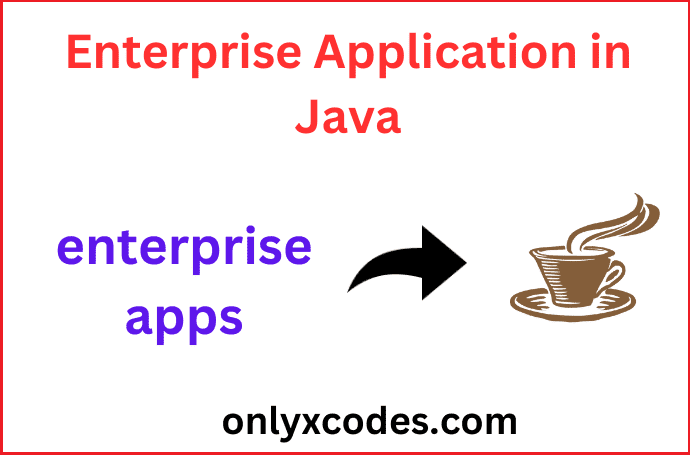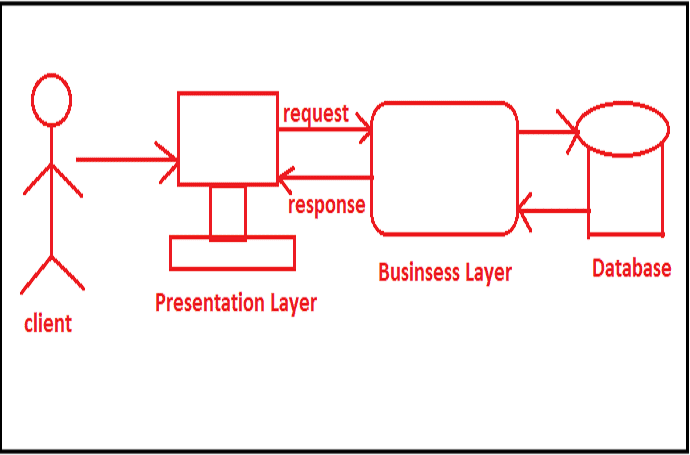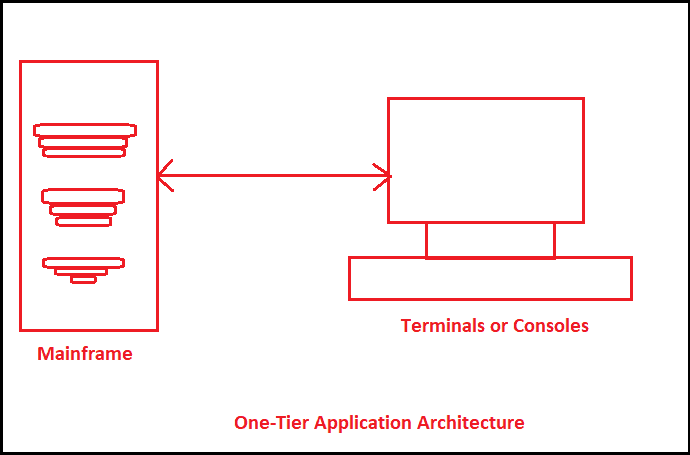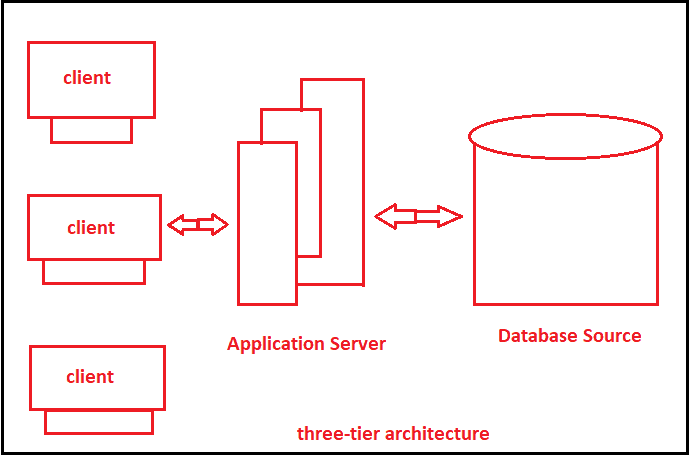Due to its platform independence and security features, Java is one of the most often utilized programming languages when creating enterprise applications. A software program that supports the business procedures of a large corporation or organization is known as an enterprise application in Java.
The fundamentals of Java enterprise application development, including its architecture, elements, and advantages, will be covered in this article.
Table Content
1. Introduction
2. What is an Enterprise Application?
3. What are the Layers of Enterprise Application?
4. The Architecture of Enterprise Applications
5. Components of an Enterprise Application
6. How the Components Work Together
7. Benefits of Developing Enterprise Applications in Java
8. Challenges of Developing Enterprise Applications in Java
9. Examples of Enterprise Applications in Java
10. Best Practices for Developing Enterprise Applications in Java
11. Conclusion
12. FAQs
1. Introduction
A highly developed programming application called an enterprise application helps big businesses conduct their daily operations effectively. These applications have been developed to deal with the enormous amounts of data and business transactions that take place in an organization.
Enterprise applications can be created in a platform-independent environment using Java, an object-oriented programming language. It provides a huge selection of frameworks, tools, and APIs that make it easier to construct enterprise applications.
The architecture, elements, advantages, challenges, and best practices of Java enterprise application development will be covered in the next parts.
2. What is an Enterprise Application?
A software program that supports the business procedures of a large corporation or organization is known as an enterprise application. It has several different parts, including web services, middleware, databases, and user interfaces.
The massive amounts of data and transactions that take place within a business are catered for by enterprise applications. Because they allow for effective management of business processes, these apps are essential to an organization's success.
3. What are the Layers of Enterprise Application?
The logical split of the code into layers improves maintainability. However, a layer will be referred to as a tier once it has been physically moved and deployed on another system.
The enterprise program will be used by many users concurrently at any given moment, so utilizing a tiered application offers greater performance.
Think about a login web module. The login page will be rendered once the user opens the browser. The user will provide their information (username and password).
An authentication request will be delivered to the server after the form has been submitted.
The response will then be produced, and the browser will receive the outcome. The user interface, business logic, and database are the three separate components at play in this case. These are referred to, respectively, as the presentation layer, business logic layer, and data storage layer.
Each of these layers will communicate with the layer above and share information. Typically, the procedure is as follows:
Once the browser is launched, the user will enter the URL.
The browser will render a login page. The form will be filled out by the user and submitted for the business logic layer to process.
The business logic layer will communicate with the data storage layer to verify the data.
The business logic layer will now deliver the result to the presentation layer under the data storage layer's result return, and the client's browser will display the results page.
4. The Architecture of Enterprise Applications
Let's talk in-depth about tiers now that we are clear on the distinction between a tier and a layer. It will be referred to as a one-tier, two-tier, or multi-tier application depending on how many physical separations it uses.
One-Tier Architecture
One-tier applications are business applications that include all of their components on a single machine. These programs are also referred to as single-tier applications.
We may therefore say in general that these are the programs that are installed and used by a single computer.
As an illustration, consider an IntelliJ IDEA software program. On our own PCs, IntelliJ IDEA will be running after we install and launch it. There is no need for a network.
The business logic, Swing GUI, and information storage in a filesystem will all be carried out on the same computer.
Two-Tier Architecture
The enterprise application is referred to as a two-tier application when it is split across two computers.
In most cases, the database will be transferred to a distinct, specialized computer. This can function as a database server or host machine.
The data layer will be located in a different place from the presentation layer and business logic layer.
The Oracle database management system is one instance of this. When using an Oracle database, we install Oracle on a specific computer, also known as the Oracle server.
We can now deploy the Oracle client on the user's computer. When requesting information from an Oracle table, the client application connects to the server and requests the information we need.
Three-Tier Architecture
A three-tier application is one in which the presentation layer, business layer, and data layer are all operating on separate dedicated servers and communicating with one another over a network.
The display layer is handled by the web server, the business layer is handled by the middleware server, and the database layer is handled by the database server.
Additionally, the middleware server is capable of offering monitoring for connections and transactions.
Any online shopping application, for instance, can be classified as a three-tier application.
Look to see how. In this application, presentation pages on a browser will show the products.
The application server will provide the business logic, which includes using transaction or messaging services to calculate discounts, the overall amount the buyer must pay, and other products.
The tables on the database server will save the buyer's information, product information, bank information, delivery location, etc. for future use.
Thus, the three layers that are involved in this application are the presentation tier, the application tier, and the data tier.
Multi-Tier Architecture
An enterprise application's general structure and design are referred to as its architecture. The multi-tier architecture used by enterprise Java apps has the following layers:
Client Layer:
Contains client apps that give end users information. These programs are usually mail clients, web browsers, or mobile access clients for Java Enterprise System.
Presentation Layer:
This layer is in charge of showing the user experience to them. It has elements like forms, online pages, and graphical user interfaces (GUIs).
It offers services that let users handle and manipulate the presentation while also displaying data to end users.
For instance, users can change how information is presented to them using an online mail client or Portal Server element.
Business Layer:
The application's business logic is contained in this layer. It manages data and transaction processing by the enterprise's rules and regulations.
It offers back-end services that usually get information from the data tier to give to other services in the presentation or business service tiers or directly to customers in the client tier.
For instance, Access Manager gives other Java Enterprise System elements authentication services.
Data Layer:
The storing and retrieval of data are the focus of this layer. Databases, file systems, and data centers are some of their parts.
It offers database services that the presentation tier or business service tier can reach.
Integration Layer:
The enterprise application must be integrated with other systems and services using this layer. It has elements like web services and messaging services.
5. Components of an Enterprise Application
Java enterprise applications have four significant components:
1. User Interface
The Business Application is visually represented by the User Interface (UI). Users interact with it as part of the program, and it is made to be simple to use, adaptable, and intuitive.
The information must be displayed, human input must be accepted, and feedback must be given to the user.
2. Application Logic
The Enterprise App's central component is the Application Logic. It is in the role of handling user inputs, carrying out calculations, and carrying out business rules.
For a seamless user experience, the Application Logic interacts with the Data Layer and the User Interface.
3. Data Layer
Data used by the Enterprise Application must be stored and retrieved by the Data Layer. Data like customer details, stock amounts, and financial information are included.
Databases, data warehouses, and data lakes are just a few examples of the tools that make up the data layer.
4. Integration Layer
Connecting the enterprise application to other systems and apps is the responsibility of the integration layer. As a result, there is a reduction in the need for manual data input and a decrease in errors due to the seamless transfer of data between systems.
5. Security
Every Enterprise Application must include security. It is in charge of protecting confidential information, preventing unauthorized access, and securing the integrity and confidentiality of data saved in the application.
6. Reporting and Analytics
An enterprise application must have both reporting and analytics. They give users access to information about how businesses are performing, allowing them to take wise choices.
Dashboards, ad-hoc reporting, and data display tools are examples of reporting and analytics tools.
6. How the Components Work Together
An enterprise application's components work together to offer businesses a complete answer.
To obtain and store data, the User Interface communicates with the Application Logic, which then communicates with the Data Layer.
Data is secured from unauthorized access by security and is seamlessly transferred between systems by the integration layer.
To help users make wise choices, Reporting, and Analytics also offer users insights into business efficiency.
7. Benefits of Developing Enterprise Applications in Java
Platform Independence:
Because Java is platform-independent, it can operate on any operating system without requiring any code changes.
Because of this, Java is a great option for enterprise application creation, where various systems and platforms must function properly together.
Robustness:
Java is noted for being reliable and strong. It is the perfect option for enterprise-level applications because it is built to manage large-scale applications and can easily handle high traffic volumes.
Security:
Java is recognized for its powerful authentication mechanisms and application security, which make it a secure option for developing enterprise applications.
Scalability:
Java is a great option for enterprise-level applications because of its architecture, which is built to manage big applications and can easily scale up or down as necessary.
Rich Set of APIs:
A wide range of APIs (Application Programming Interfaces) are available in Java, which can be used to make comprehensive enterprise apps. These APIs offer developers a variety of tools.
Community Support:
Java has a sizable and lively developer community that is constantly trying to enhance the language and create new tools and libraries. As a result, Java is kept current and useful for developing enterprise applications.
8. Challenges of Developing Enterprise Applications in Java
Due to a variety of variables, including the size and complexity of the application, the need for scalability, and the constantly shifting technology landscape, developing enterprise applications in Java can be a challenging process.
The following are some of the main difficulties that programmers may run into when creating Java enterprise applications:
Complexity:
Enterprise applications frequently have many layers and components, making them complex and large-scale.
Such applications can be difficult to create and manage, so developers must be knowledgeable in a variety of programming languages and technologies.
Scalability:
Scalable enterprise apps can manage high data and traffic volumes. The architecture of the application must be designed by the developers to allow for easy scaling without reducing effectiveness.
Integration:
For enterprise apps to function properly, they must be integrated with multiple other systems and applications.
To make a seamless integration, developers need to be knowledgeable about a variety of integration methodologies and technologies.
Security:
Security is of the highest concern in enterprise apps because they handle personal data and transactions.
To protect the application and its data from unwanted access and loss of privacy, developers must put in place effective security measures.
Maintenance:
To keep them functional and current, enterprise applications need frequent maintenance and updates.
To keep the application up to date with the newest standards and technologies, developers must be active in discovering and resolving bugs and other problems.
Performance:
Enterprise apps must function effectively in the face of high traffic and load.
The speed of the application needs to be optimized by the developers using best practices and strategies like caching, load balancing, and optimization algorithms.
9. Examples of Enterprise Applications in Java
Here, we'll look at a few meaningful Java enterprise application examples and talk about their features, advantages, and tech components.
Example 1: Customer Relationship Management (CRM) System
A software application called a customer relationship management (CRM) system aids companies in managing their interactions with customers.
It frequently has tools for handling client data, monitoring sales and marketing efforts, and studying consumer behavior.
As a result of its scalability, security, and integration capabilities, Java is a popular option for creating CRM systems.
An illustration of a CRM system built on Java is Oracle CRM.
Example 2: Enterprise Resource Planning (ERP) System
A software program called an enterprise resource planning (ERP) system assists companies in managing their key operational procedures, such as inventory, production, accounting, and human resources.
Because of its reliability, scalability, and ability to integrate with other enterprise systems, Java is a popular option for developing ERP systems.
Examples of Java-based ERP systems include SAP ERP and Oracle ERP.
Example 3: Financial Trading Systems
Software programs called financial trading systems are employed by traders to purchase and sell financial instruments like stocks, shares, and commodities.
These systems usually need to have strong security features, high performance, and low latency.
Due to its proficiency with intricate formulas and data structures, as well as its robust performance and security features, Java is a well-liked option for creating financial trading systems.
Example 4: E-commerce Systems
Businesses use e-commerce systems, which are software programs, to offer products and services via the internet.
These systems typically have features for processing payments, managing products, and monitoring orders.
Because of its scalability, security features, and capacity for handling high-traffic volumes, Java is a great option for creating e-commerce systems.
Example 5: Content Management Systems (CMS)
Websites, blogs, and online communities can all be managed and published using content management systems (CMS), which are software programs.
These systems frequently have tools for controlling user access and permissions, as well as features for creating, editing, and publishing material.
Because of its scalability, security, and flexibility, Java is a popular option for creating CMS systems.
Example 6: Supply Chain Management (SCM) System
A supply chain management (SCM) system is a piece of software that controls how products and services move from suppliers to consumers.
These systems frequently have tools for monitoring shipments, managing inventory, and evaluating supply chain efficiency.
Java works well for creating this kind of application.
10. Best Practices for Developing Enterprise Applications in Java
Java enterprise application development calls for a dependable, scalable architecture that can manage challenging business needs.
The following best practices can aid in creating enterprise Java apps of the finest quality:
Use a Layered Architecture:
To separate concerns and make the application simpler to manage and modify, it should be designed using a layered architecture, such as MVC (Model-View-Controller) or SOA (Service-Oriented Architecture).
Follow Coding Standards:
To make sure that the code is consistent, readable, and maintainable, it is essential to keep to coding guidelines. Code quality can be increased by following standards like naming protocols, indentation, and comment procedures.
Use Design Patterns:
Creating reusable and scalable solutions for typical issues can be helped by design patterns.
Making the application more adaptable and streamlining development can be accomplished by utilizing design patterns like Factory, Singleton, and Observer.
Write Unit Tests:
Every module of the application needs to have unit tests to make sure it performs as anticipated in terms of functionality and behavior.
By catching bugs early in the production cycle, automated testing helps to lower the cost of fixing them in the future.
Optimize Performance:
The application needs to be performance-optimized to manage a lot of requests and transactions. Performance can be enhanced by using strategies like caching, lazy loading, and connection sharing.
Use a Version Control System:
The application's source code should be managed with a version control system like Git. This helps monitor changes, work with other developers, and, if necessary, roll back changes.
Secure the Application:
Common weaknesses like SQL query, cross-site scripting, and authentication attempts should be protected against by the application.
The security of the application can be increased by utilizing safe coding techniques, encryption, and networks.
Document the Code:
To ensure that other developers can comprehend the code's usefulness and behavior, it must be documented.
The code can be maintained and modified or added more easily with proper documentation.
You can achieve the creation of high-quality enterprise Java applications that satisfy the complex requirements of modern enterprises by following these best practices.
11. Conclusion
Overall, Java is a strong and adaptable language that has many advantages for creating enterprise applications. A rich set of APIs, platform independence, security, scalability, robustness, and community support make it the perfect option for creative and effective enterprise applications.
FAQs
What are the Components of an Enterprise Application?
The User Interface, Application Code, Data Layer, Integration Layer, Security, and Reporting and Analytics are the components of an Enterprise Application.












.png)


No comments:
Post a Comment